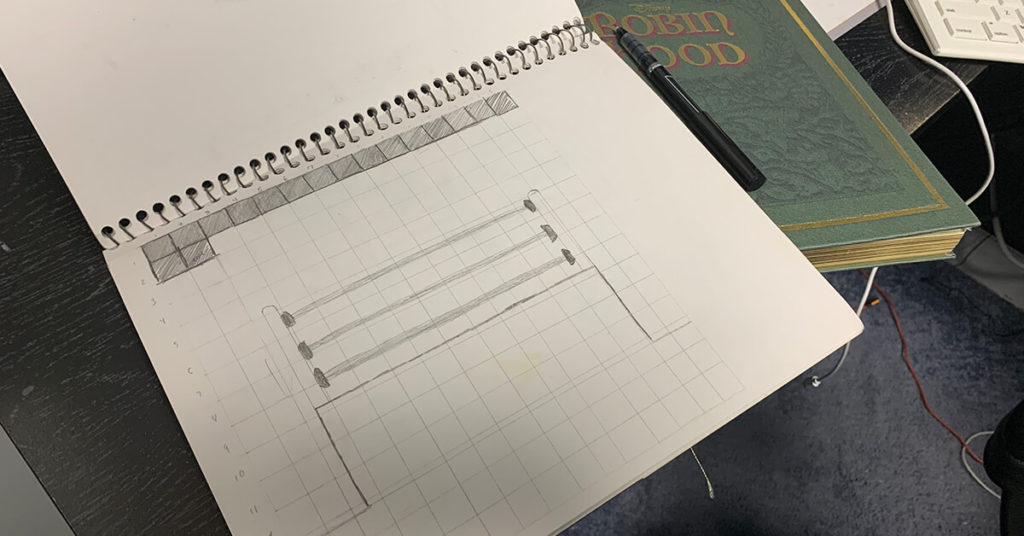Finding Your Target Audience Through Market Research
My target audience is you.
It’s very unlikely you clicked on this link and fall outside of my core target audience.
You are:
- local Ohio Valley business owner/marketer interested in growing your brand
- friend or family of Eric Hersey
- designer, developer, or creative – looking for inspiration or collaboration
There is that slight possibility you fall outside of these parameters. If so, 99% percent chance you came from a search engine and are looking for answers about “target audiences”.
Does that cover everyone? Let’s move on.
What is a Target Audience?
In marketing and business, your target audience refers to your specific group and audience that can benefit from your product or service. Although you can segment your audience by age, gender, income, location, behavior, and interest – you will find positive results by identifying their problems.

Grouping people by age and gender will often find similar problems. The same can be said about income levels and socioeconomic status. Saying I want to reach Males 18-49 in Wheeling, West Virginia that make over $30,000 per year sounds like it would be a perfect target audience example, right? Although this could be considered a solid audience, you are missing some key components.
Solving a Problem
For years, ever since high school, I wanted to create a pro wrestling company. As silly as that dream may sound, I put a lot of time and energy into planning this organization. I wrote my first business plan for my proposed independent wrestling federation – complete with a mission statement, core values, and my target audience.
Males 18-49 in Wheeling, West Virginia that make over $30,000 per year
I found census data and played around in Excel. I took recent attendance records for the WWE show at Wesbanco Arena and figured out what percentage of fans I would need to attend. On a spreadsheet, I had tiered formulas that showcased how many tickets I would need to sell, what percentage of fans needed to buy hotdogs, and even how many referees I could hire based on attendance.

My data proved that I could make a nice profit off of each show. But my data was missing a crucial piece – did we need a professional wrestling company in Wheeling?
If One Can’t Succeed, Why Would Two?
There was at least one other independent wrestling organization running shows in the Ohio Valley. I followed them for years and even participated from time to time. They progressed over the years, but all signs from the outside said they were not making a profit. Attendance figures were anywhere from 20-50 people per show. It’s not too difficult to do the math on a wrestling show.
Cost of Ticket * People in Attendance = Gross Tickets
Wrestlers/Performers * Booking Fee = Cost for Talent
Gross Tickets – Cost of Talent = Gross Profit
Yes, merchandise and event space also come into play, but there was no way this company was making money. They had 20+ performers. Unless they were all working for free (or for hot dogs), the show was for charity. The few in attendance enjoyed it and the wrestlers were getting some experience.
This show was put on as a hobby and not a legitimate business made for profit.
Mine Would Be Different
I started making excuses. This was my dream and there had to be a reason why no one supported this company. I would do better.
People in Wheeling, West Virginia and the surrounding area needed a local wrestling organization, right?
Slowly I started to realize that there was probably not an audience – regardless of all the great marketing ideas I had.
Even though I thought there was a problem (not enough quality wrestling), no one else had this problem. I had a target audience but was missing the most important part – the problem I could solve.
Market Research
Just because you have a mission, vision, core values, and a target audience doesn’t mean you can run a successful business. All too often we hear a small few tell us how wonderful it would be to have a product or service and we think that is the voice of everyone.
I had two or three friends that really disliked the current wrestling product on television. Everyone I asked said the same. We needed an alternate option. I could solve that problem for my 25 year old male buddies.

My market research showed I did indeed have a problem that I could solve.
It’s pretty obvious now that my sample size and data was skewed. I was asking friends of mine (who shared similar interests) leading questions.
Wouldn’t it be nice to have an alternative wrestling option here in the Valley?
Sure it would. But maybe I should have asked:
How many independent wrestling shows have you went to in the last 5-years?
Quantitative and Qualitative Market Research
The point of doing market research is to see if you have a viable business option. Before we even find out who our target audience is, we need to survey and ask questions to see if there is an audience.
Quantitative Market Research helps collect large amounts of data. These tend to be surveys, questionnaires, and polls. You might recognize popular websites like:
Many brands and companies create surveys or questionnaires to uncover opportunities in the marketplace before making big decisions.
Qualitative Market Research determines consumer motivation. This can be done through A/B testing or observation.
- Case Studies
- Historical Data
- Situational or Narrative
Answering a question on a survey might make you say one thing but when push-comes-to-shove, you may react a different way.
Wouldn’t it be nice to have an alternative wrestling option here in the Valley?
Yes
How many independent wrestling shows have you went to in the last 5-years?
Zero
Defining Your Target Audience Using Market Research
I always circle back to my wrestling business plan. One day there might be an opening. Market research might prove that there are enough individuals (regardless of age) that want to attend local wrestling shows. Until that moment, I’ve sidelined this possibility. Market research proves it wouldn’t be a financial success.

On the other hand, I landed a successful web design company. Turns out there was a need for digital marketing (just not headlocks). Wheeling, West Virginia had several freelance web designers and also some large corporate design firms. Small businesses had to choose between going with an untrusted high school grad or pay tens of thousands to a large firm.
What about those Small-Medium Business Owners that needed to know where their advertising dollars were working? They didn’t want to spend thousands of dollars on a website or spend their entire monthly advertising budget on a firm’s retainer.
This is how I found my core target audience. There was a need in the marketplace and I stepped in.
Be Specific
For me, I know I want small business owners in the Ohio Valley that spend money on advertising. There are enough of these individuals that I can make a healthy living.
If I took it one step further and said: I want small business owners in the Ohio Valley that spend money on advertising and love fantasy football… I might find myself talking to one or two individuals a year.
It would also be problematic if I said: I want small business owners. My audience has grown but now I’m competing against the world. It’s also difficult to deliver the right message. Not all small business owners have money to spend on websites and analytics.
Create Personas
Once you determine who you should be targeting, put yourself in this person’s life. What do they do everyday? When are they online? How will they come in contact with your brand?

Many businesses will create buyer personas or avatars. They will give their personas clever names and talk about them frequently. Whatever works for you. The main goal is to try and understand who your target audience is and how you can help them.
More Than One
Most businesses will have several audiences. If you have different products or services, you will likely cater to different people or personas. If you say, “I serve everyone”, you need to step back and think. Yes, I guess I can make websites for everyone too, but a 3-year-old and a 99-year-old are very unlikely to be calling my phone.
Create personas and marketing strategies for all of your target audiences.
Benefits of Understanding Your Target Audience
Part of my job is to help business owners get rid of advertising waste. If you only service individuals in Ohio, why do we care about your Kentucky website traffic? When you are able to determine your target demographic, you can target your message better and more efficiently.
For those using social media advertising, it makes creating ads so much easier when you can name the location, interests, and behaviors.

It’s a lot easier to determine what advertising channels you should use when you think about what your avatar “Susan” is doing in her freetime.
Your overall service and products become better when you understand what problems your customers are facing and how you are able to solve them. Solve their problems and you are likely to create customers for life.
More to Learn About Target Audiences
You should be using your audience and customer base to enhance your business. Use market research from your customers to determine how you can overdeliver. There are free tools available online and also resources to help you better understand your market.
If you are unsure where to get started, I have several podcast recommendations to help you get started.
If you want to learn more about how to uncover your target audience, check out “003: Defining Your Target Audience” by Invisible Details on Apple Podcasts.
See how Market Research can help your business and define your audience. Check out the People Catalysts podcast with guest Lara Fordis, a market research expert.




